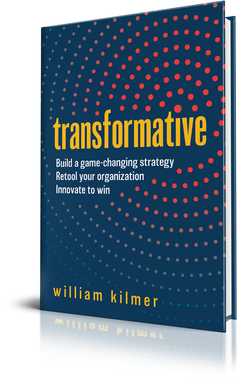Next Concept: Democratizing
Reframing Your IndustryTransformative organizations create asymmetric competition by actively reframing their industry, seeking to change the rules and structure to gain leverage against incumbents and create a playing field where they can better compete. Reframing looks for alternative ways to create value and advantage and turn incumbents’ strengths into weaknesses, forcing them to maintain existing assets that are less competitive in the new industry model. The three most effective reframing methods are developing platforms, crossing industry swim lanes, and democratization.
|
